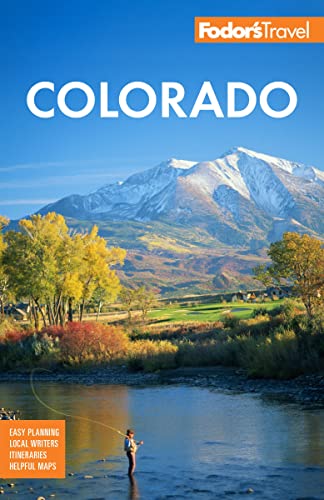Best Wildlife in Colorado
Bighorn Sheep
Clambering along rocky ledges, muscular bighorn sheep fascinate with their ability to travel so easily where the rest of us can't. In winter the docile herd animals descend to lower elevations. Rams have heavy, curled horns, while ewes' horns are short and slightly bent. From afar it's easy to spot both sexes' white rumps, which stand out brightly against their furry brown coats.
Bison
The shaggy, grouchy American bison may not be the western frontier's most charismatic ungulate, but it's certainly the most iconic. A bison can reach 6 feet at the shoulder, and males can weigh a ton (females typically weigh about 1,000 pounds). Bulls and cows alike sport short, curved horns, which they'll use to gore predators (or tourists who invade their space).
Black Bears
So common in Colorado that residents in some areas must chase them out of garbage cans and backyards, the black bear is in a constant battle for space and food. "Black" refers to the species, not the color, so don’t be confused if you see gold, tan, or rust; it’s the same family. In any case, the way not to see one is to hike loudly, especially in Rocky Mountain National Park and other heavily forested areas from mid-March to November. Hang a bear bag while camping and pack out your trash.
Coyotes
This foraging omnivore's indiscriminate diet includes carrion, small mammals, insects, and grasses. They're about 30 pounds or more, distinguishing them from much larger wolves. The gray-tan canines thrive throughout the western United States. They travel alone or in small packs and, with rare exceptions, pose little threat to humans although you'll hear their loud cries when nearby.
Elk
A bull's antlers can weigh 40 pounds and, in summer, shed a soft fur known as antler velvet. Elk congregate where forest meets meadows, summering at high elevations before migrating lower in winter. In September and October, bulls attract a "harem" of mating partners by bugling, a loud and surreal whistling.
Marmot
A few species of marmots like to live high up among granite rock piles of talus slopes and along riverbanks, so if you see them, it's likely to be along high-country trails. The rocky strongholds help protect these furry ground squirrels from such natural predators as eagles and hawks.
Moose
Feeding on fir, willows, and aspens, the moose is the largest member of the deer family: the largest bulls stand 7 feet tall at the shoulders and weigh up to 1,600 pounds. Distinctive characteristics include its antlers, which lie flat like palmate satellite dishes. Keep your distance if you come upon a moose; they are notoriously territorial and protective of their offspring.
Mountain Lions
Although the mountain lion is an occasional predator, chances are you won't see him at most of the parks. They're tawny colored, can be 8 feet long, and weigh up to 200 pounds. They're capable of taking down a mule deer or elk.
Mule Deer
Often seen in meadows and forests are mule deer, with their black-tipped tails and pronounced antlers. Their name comes from the shape of their ears, which resemble mules' ears. Their unusual gait—all four feet can hit the ground at once—gives them an advantage over predators, as they move faster over scrubby terrain and can change directions instantly. Watch for them at peak feeding times at dawn and dusk.




